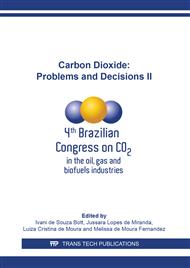p.39
p.49
p.59
p.69
p.79
p.87
p.97
p.107
p.117
CO2 Rich Natural Gas Processing: Technical, Power Consumption and Emission Comparisons of Conventional and Supersonic Technologies
Abstract:
Supersonic separator is investigated via process simulation for treating CO2 rich (>40%) natural gas in terms of dew-points adjustment and CO2 removal for enhanced oil recovery. These applications are compared in terms of technical and energetic performances with conventional technologies, also comparing CO2 emissions by power generation. The context is that of an offshore platform to treat raw gas with 45%mol of CO2, producing a lean gas stream with maximum CO2 composition of ≈20%mol, suitable for use as fuel gas, and a CO2 rich stream that is compressed and injected to the oil and gas fields. The conventional process comprises dehydration by chemical absorption in TEG, Joule-Thomson expansion for C3+ removal, and membrane permeation for CO2 capture. The other alternatives use supersonic separation for dew-points adjustment, and membranes or another supersonic separation unit for CO2 capture. Simulations are carried out in HYSYS 8.8, where membranes and supersonic separation are modeled via unit operation extensions developed in a previous work: MP-UOE and SS-UOE. A full technical and power consumption analysis is performed for comparison of the three cases. The results show that the replacement of conventional dehydration technology by supersonic separators decreases power demand by 8.5%, consequently reducing 69.66 t/d of CO2 emitted to the atmosphere. The use of supersonic separation for CO2 capture is also superior than membranes, mainly due to the production of a high-pressure CO2 stream, that requires much less power for injection compression than the low-pressure permeate stream from membranes. Therefore, the case with two supersonic separator units in series presents the best results: lowest power demand (-23.9% than conventional case), directly impacting on CO2 emissions, which are reduced by 2598 t/d (-27.82%).
Info:
Periodical:
Pages:
79-86
Citation:
Online since:
July 2019
Price:
Сopyright:
© 2019 Trans Tech Publications Ltd. All Rights Reserved
Share:
Citation:


